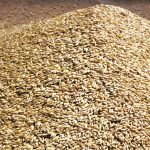MarketsFarm — Feed grain prices in Western Canada are showing the usual seasonal weakness as spring seeding continues, but prices are set to fall further. “I think as we get going, (prices) are going to lower down quite a bit,” Mike Fleischhauer of Eagle Commodities Ltd. at Lethbridge said. “The corn market over the next












